Mirrors
1. Explain the formation of an image using a spherical mirror.
Solution:
Spherical mirrors:
-
concave mirror
-
convex mirror
Image is formed based on reflection of light from the mirror.
f = focal length of mirror
r = 2·f = radius of curvature of mirror
a = object distance
b = image distance
y = height of object
y' = height of image
Image magnification:
Sign convention:
Concave mirror: Values in front of the mirror a,b,r,f are positive, behind the mirror are negative.
Convex mirror: Values r,f are negative. Values y,y′ above the optical axis are positive, below are negative.
Mirror equation of spherical mirrors:
If:
-
Z>0 → image is upright and virtual
-
Z<0 → image is inverted and real
-
∣Z∣=1 → image is same size as object
-
∣Z∣>1 → image is magnified
-
∣Z∣<1 → image is reduced
2.An object 7 cm high stands perpendicular to the optical axis at a distance of 5 cm from the vertex of a concave mirror with a radius of 4 cm. Determine the position and properties of the image.
Solution:
Analysis:
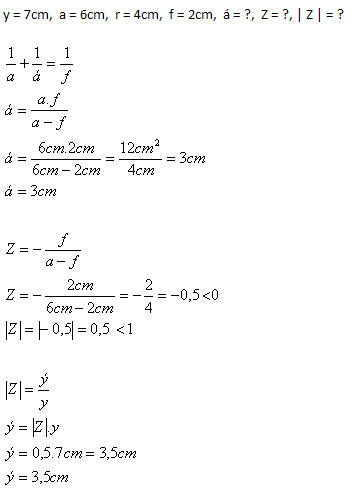
The image is reduced, inverted, real, and 3.5 cm high. It lies 3 cm from the mirror’s vertex.
3.An object 6.5 cm high stands perpendicular to the optical axis of a concave mirror at a distance of 1 cm from the mirror’s vertex. The radius of the mirror is 4 cm. Determine the position and properties of the image.
Solution:
Analysis:
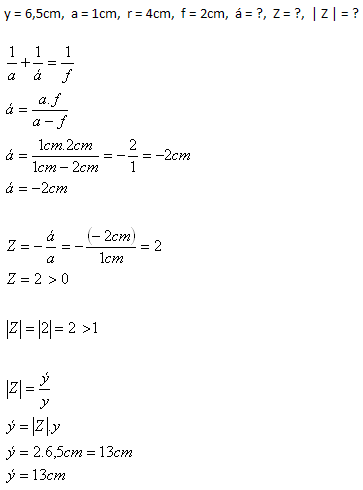
The image is magnified, upright, virtual, and 13 cm high. It is formed 2 cm behind the mirror.
4.A concave mirror with a curvature radius of 1 m produces a virtual image 3 m behind the mirror. At what distance in front of the mirror is the object located? What is the magnification of the image?
Solution:
Analysis:
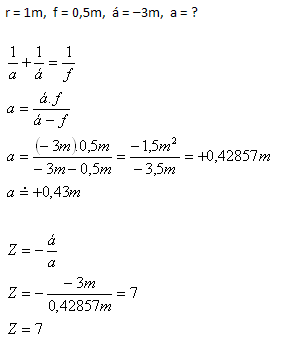
The object is about 0.43 m from the mirror. The image is magnified 7 times.
5.An object is placed at a distance of 60 cm from the vertex of a concave mirror. Determine the focal length of the mirror if the real image of the object (Z < 0), formed on a screen, is magnified 1.5 times.
Solution:
Analysis:
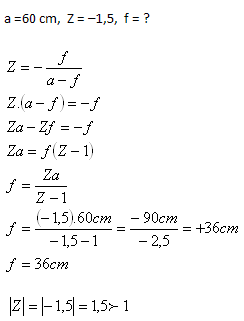
The focal length of the mirror is f = 36 cm. The image is magnified, inverted, and real.
6.Where should an object be placed in front of a concave mirror with a focal length f = 40 cm in order to obtain an inverted image 4 times larger than the object?
Solution:
Analysis:
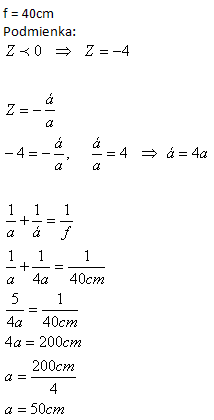
The object should be placed 50 cm in front of the mirror.
7.An object is located 1.4 m from a concave mirror, and its image is 0.6 m from the mirror. Determine the focal length of the mirror, its radius of curvature, and the magnification of the image.
Solution:
Analysis:
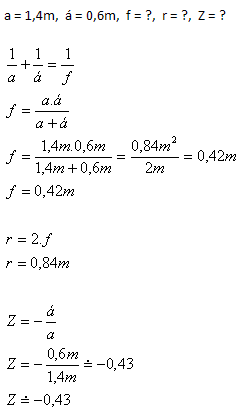
The focal length of the mirror is f = 0.42 m, the radius of curvature r = 0.84 m, and the magnification Z = –0.43.
8.An object stands 60 cm in front of a concave mirror. If the object is moved 10 cm closer to the mirror, the distance of the image from the mirror increases by 80 cm. What is the focal length of the mirror?
Solution:
Analysis:
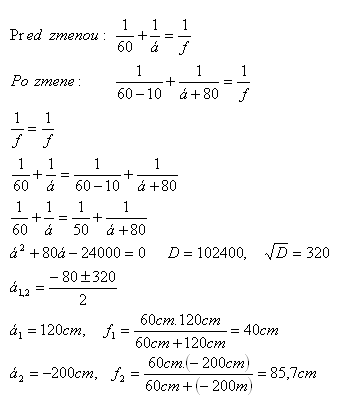
The focal length of the mirror is f1 = 40 cm, or f2 = 85.7 cm.
9. At what distance from a convex mirror (a < 0, f < 0) should a light source be placed so that its image is 60 cm from the mirror? The focal length of the mirror is 90 cm.
Solution:
Analysis:
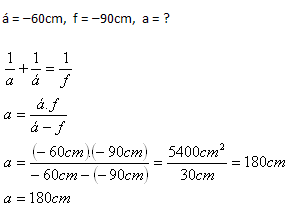
The light source should be placed 180 cm from the mirror.
10. A person looks at a silvered sphere (a < 0, f < 0) with a radius of 0.3 m, which is 0.25 m away. At what distance from the observer is their image located?
Solution:
Analysis:
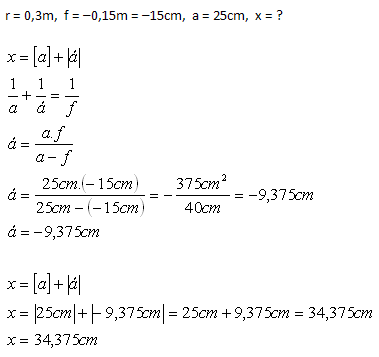
Their image is located at a distance x = 34.375 cm from the observer.